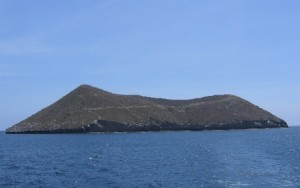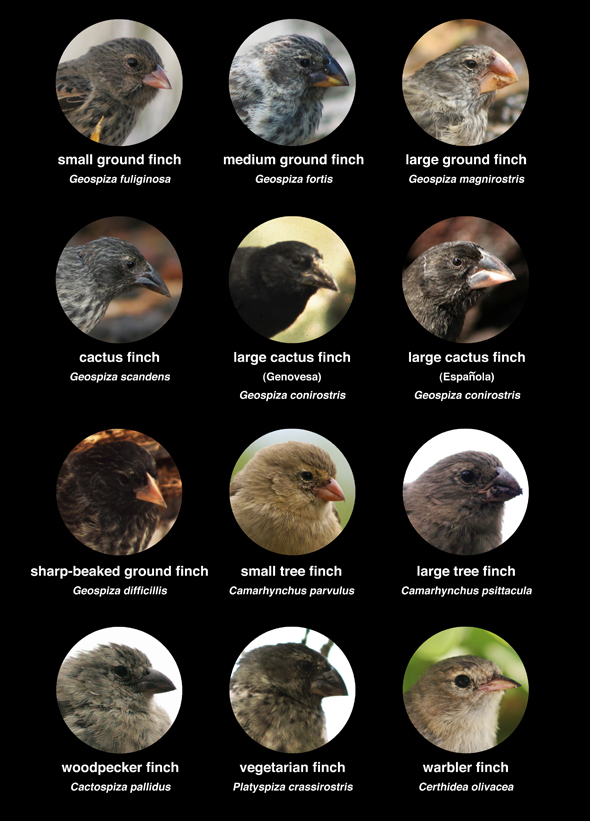As part of Columbia University’s Darwin Speaker Series, Rosemary Grant of Princeton University came to speak on April 14th, 2009 about evolution in Darwin’s finches.

This year being the 150th anniversary of On the Origin of Species, and the 200th anniversary of Darwin’s birth, it was fitting for Rosemary Grant to speak about her research on the island Daphne in the Galapagos Islands. The finches have radiated into over a dozen diagnosable species, some that share habitats and some living alone on their islands. The islands are so isolated that migrations are rare, but when they do occur, researchers are there to observe the events.
 Rosemary is an interesting woman, and her husband and research partner, Peter, an interesting man. People may unknowingly assume they are a typical cute older couple when passing them on the street. But what they have seen during their years of research on a few small islands may surpass in scope anything we may hope to witness in any one of our lifetimes.
Rosemary is an interesting woman, and her husband and research partner, Peter, an interesting man. People may unknowingly assume they are a typical cute older couple when passing them on the street. But what they have seen during their years of research on a few small islands may surpass in scope anything we may hope to witness in any one of our lifetimes.
Over the past several years, Rosemary and Peter Grant have observed shifts in beak size and as well as instances of hybridization and a possible trend of introgression between 2 species. A hot topic that an outsider may not realize is that there is no “definition” of what is a species. Search on the internet for “species concept” and you will find over 100 million hits.
 In her talk, Rosemary Grant do not specify a species concept, but do distinguish that there are points first where lineages are diagnosably different and then where they are no longer capable of interbreeding. This all occurs over evolutionary time, but the Grants have been able to observe some changes that suggest that episodic introgression is occurring where pre-mating barriers such as mating songs (learned behavior) and morphological differences (genetic) may be overcome.
In her talk, Rosemary Grant do not specify a species concept, but do distinguish that there are points first where lineages are diagnosably different and then where they are no longer capable of interbreeding. This all occurs over evolutionary time, but the Grants have been able to observe some changes that suggest that episodic introgression is occurring where pre-mating barriers such as mating songs (learned behavior) and morphological differences (genetic) may be overcome.
Hybridization and introgression seem to be very important processes for speciation and other evolutionary processes. Another one of the main ideas from the lecture is that conservation is not simply about conserving a species. Rosemary put up two quotes at the end of her talk that represent this notion:
“Neither species nor environment are static entities. They’re dynamic and they are constantly changing.”
“To conserve species and their environment, we must keep them both capable of further change.”
Surely other researchers will continue the Grants’ work in the Galapagos. However, it still seems that the general public would not be able to understand how these studies are important to their daily lives. Conservation of natural ecological processes and functionally important species will be important in the future for conservation of ecosystems, and on the larger scale the biosphere. If there comes a day that the world’s ecosystems are so degraded that resources are being depleted in every way, then our human existence will be under threat (much like what I discussed in an earlier post).
Conservation biologists are often mistaken as simply being animal-lovers and tree-huggers with graduate degrees. Their work truly is much, much larger than that. With more communication of interesting work such as Rosemary Grant’s, and getting more opportunities for the general public to be exposed to the people doing the work, we may be able to bridge some of that gap.
Image credit (in order of appearance):
http://www.rphs.devisland.net/johnna_nicole/Images/Galapagos-bartolome-island.jpg
http://www.galapagosonline.com/Islands/islands/Daphne/daphne.jpg
http://people.rit.edu/rhrsbi/GalapagosPages/Pictures/LandBirds/FinchTypes.jpeg
Very interesting! How does it work that learned behavior (such as mating songs) can be overcome as a pre-mating barrier? I’d be really interesting to hear a real-life example of how this has occurred.
Also, if she avoids discussing a species concept, how does she define hybridization? Is it just interbreeding of two genetically distinct populations, with no regard to taxonomy?
if one male of one species does not grow up around his father or another male of his species, he will learn the song of the closest male of any species. either that or he won’t have a song at all, which makes it difficult to find a mate because for many of the birds that is how the female finds a mate!
Though she didn’t explicitly say what species concept, interbreeding was considered to have occurred if the individuals came from lineages that were “diagnosably different.” If you look up species in Wikipedia, they have explanations for the different concepts. The most widely known by the general public is the Biological Species Concept. Here, that would mean that 2 individuals could not interbreed. But even if they could, they may still be considered to be two different species if using the Phylogenetic Species Concept, if the 2 lineages have diverged enough.